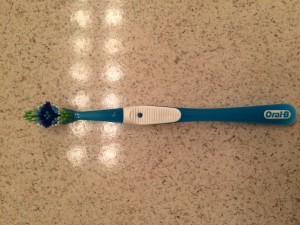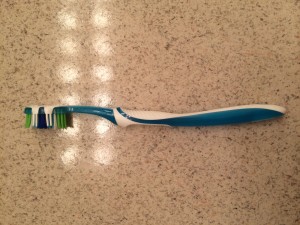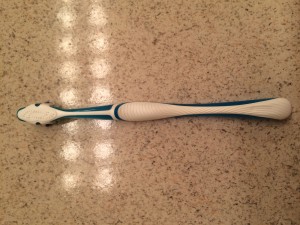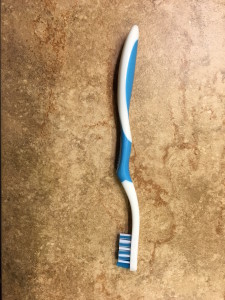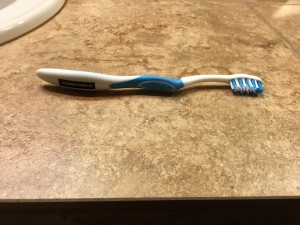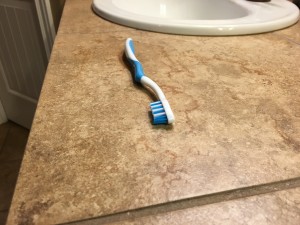This is an interesting topic to write about trying to recall the way I was taught Thanksgiving. Honestly, the more than I think of it my teacher taught it to the class by reading a children’s book that included pictures. I remember that it involved the pilgrims, but more importantly I knew for sure that dinner was turkey. Now regardless of whether the facts are true about what was served for that dinner is irrelevant. The short book that she read did in fact have a turkey on the dinner table, I remember that it seemed like a meal that was more formal than a regular dinner, and lastly that it was a time to be grateful for what we had. That is how I was taught Thanksgiving in school. Although a book gave me the brief background of how this holiday became so important, our class did a little art to remind us that Thanksgiving was soon approaching. I hope many of you had a similar experience but our class made these paper turkeys, and we would outline out hand then cut it out. Then of course draw a head to make it look like a turkey. That was the little art assignment that we would do in class and hang them up. All in all back then I didn’t think much of it all, I just took in that it was a holiday by the pilgrims, that ate turkey to give thanks. Now that I am older it is much more than that as all of us would agree. Thanksgiving to this day is one of my favorite holidays as some of you might agree. I must say I was happy with the way I was taught in elementary school.
Prownian Analysis
Step 1, Description: The object is about 7 to 8 inches in length and roughly half an inch in width. It is primarily light blue in color and made from a hard, plastic-like material. It has a white, rubber-like material that covers the entirety of the back spine of the object and partially wraps around the front. The white material is covered in raised ridges, while the blue material is smooth and hard. The end of the object consists of a variety of dark blue, light blue, white, and green bristles. Each color of bristle varies in length, but all are stiff to the touch. There are 8 white, bendable objects that surround the bristles and appear to be made from the same rubber-like material that covers the object. The bristles are damp and are slightly frayed on the ends. They also have a fresh, minty smell to them. Overall, the object is contoured and fits nicely in my hand.
Step 2, Induction: Based on how well the non-bristled side of the object fits in my hand, I would assume that it is intended to be some sort of handle. The ridged, white material makes for a comfortable grip and prevents the object from slipping out of my hand. The frayed ends of the bristles indicate that the object has been used for some sort of scrubbing, or brushing perhaps. Due to the minty, clean smell of the bristles, one can infer that there had been a type of cleaning substance applied to them. The dampness indicates that the cleaning substance had then been rinsed off with water.
Step 3, Speculation: I would guess that this object is a tool used for cleaning. The stiff bristles would be very effective at removing dirt or debris from soiled surfaces, while the sleek, thin design would make it possible to get the tool into tight spaces. Since the object was found in a bathroom and kept in a container that prevents the bristles from touching surrounding objects, I can speculate that it is used for some sort of personal hygiene. It appears to be a relatively safe and easy tool for people of any age or gender to use.
Questions:
How many different uses are there for this object?
How long does this object last and how often must it be replaced?
Is this object a necessity, or a luxury?
Bibliography
Fee, Elizabeth, and Theodore M. Brown. “Popularizing the Toothbrush.” American Journal Of Public Health 94, no. 5 (May 2004): 721. Academic Search Premier, EBSCOhost (accessed January 23, 2016).
This peer-reviewed article discusses the history of the toothbrush in 19th century Europe and America. The article explains the growing problem of tooth decay in school children during this time due to the increasing availability of refined flour and sugar, as well as industrially processed foods. Due to this problem, the majority of American cities had free or reduced-fee health clinics that provided oral health services by the 1920s.
“Learn More About Toothbrushes.” Learn More About Toothbrushes. Accessed January 23, 2016. http://www.ada.org/en/science-research/ada-seal-of-acceptance/product-category-information/toothbrushes.
This article, found on the American Dental Association website, briefly describes the history of the toothbrush and then details the reasons for its use and tips on proper oral hygiene. The article also discusses the importance of flossing and compares different types of toothbrushes (i.e. manual vs. automatic). The author clearly believes that tooth brushing is an important daily activity.
Prownian Analysis
Prownian Analysis
Step 1: Description
The object is approximately eight inches long with white and light blue bristles at one end. It is primarily white with varying patches of blue. There are the words Delta Dental displayed on a black background. It has varying widths There are raised bumps in the middle and on the bottom. The bottom is lines instead of bumps, but looks to be made of the same material. And the material of the blue color seems to differ from the shiny material of the white sections. The bristles are all white in the middle and surrounding that switch off from groups of blue and white.
Step 2: Deduction
The object can be picked up and held within one hand and the raised bumps are silicone material, aiding in the gripping of the object so it can be deduced that the object is meant to be gripped when in use. The bristles can be used to create friction and are rather great at scrubbing, they are stiff bristles and they remain stiff even after friction is applied, meaning that it could be used to clean or scrub to clean.
Step 3: Speculation
The object is potentially used to clean, drawn from the bristles. The object could be used to clean something on a human because of the easy, maneuverable size. The toothbrush may be issued from a dental office, since it has a specific insignia on the end of it.
Questions:
What is it specifically designed to clean? Why is it shaped in the odd and differing widths? Does color have any effect on the way that it works?
Stringer, Kate. “Material Cultures,” WordPress.com. Accessed January 21, 2016, doi: https://katiestringer.files.wordpress.com/2012/02/matcult2prown.pdf.
Stringer did an analysis upon the Prown Method. Stringer explained how it applies to art and specifically art at Yale.
Thayer, Alexander. “Material Culture Analysis and Technical Communication: The Artifact Approach to Evaluating Documentation Interface,” IEEEXplore. Accessed January 21, 2016, doi: http://ieeexplore.ieee.org.libproxy.boisestate.edu/stamp/stamp.jsp?tp=&arnumber=1303811.
Thayer writes a compelling article on the documenting of artifacts which is quite important since artifacts are quite important to museums. Thayer expands on Prown’s methods even further on the specific instance of its use with artifacts and their documentation.
- « Previous Page
- 1
- …
- 76
- 77
- 78
- 79
- 80
- …
- 94
- Next Page »
